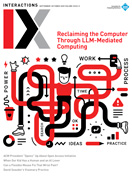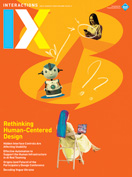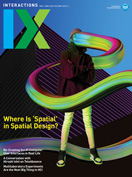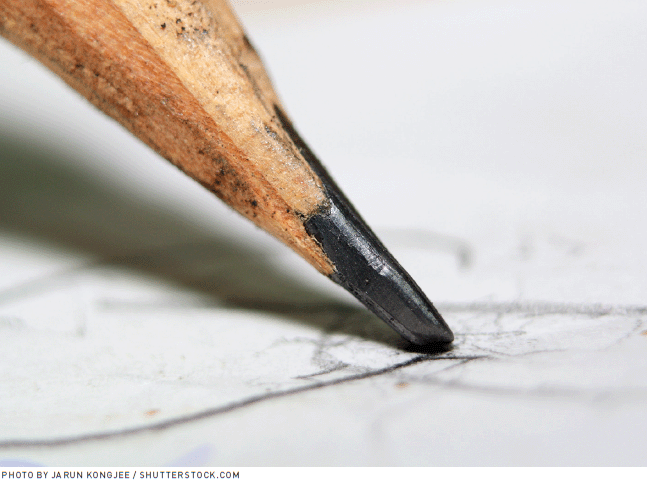Authors:
Tiffany Knearem
Earlier this year, I was visiting a friend in Scotland, and we toured a newly opened whisky distillery in the Lowlands. Scotland is renowned for its long history of distilling, and many of its distilleries serve not only as production sites but also as living embodiments of Scottish cultural heritage. I've always loved visiting places like this. Oftentimes, the people leading the tours take immense pride in their craft and are eager to share their knowledge, welcoming visitors into a deeper understanding of the surrounding culture and context. We booked a tour hoping to experience something similar. Because this facility was less than 10 years old, I expected it to be fully modernized, perhaps even augmented by AI. I was excited to see what 21st-century distilling looked like and how contemporary technologies might have been integrated into this traditional craft.
When we entered the production area, our guide began explaining the purpose of the various vessels and walked us through the process of making whisky. As I looked around, I was surprised to see no sign of a computer or digital interface. Instead, I noticed a red binder on a desk, filled with printouts and accompanied by a few pencils. That was it! This got me thinking about how they track and assess the quality and velocity of their production over time. Surely, I thought, there must be another room where data was being collected, processed, and archived. I asked our guide how they sourced the data to evaluate what was working and what might be improved. He pointed to the binder, opened it to a random page, and showed us handwritten notes from that day's distillation process. Curious, I asked what software system they used to track production metrics. He gave me a wry smile and replied that this level of tracking simply wasn't necessary to produce a quality product. With the right equipment and domain expertise, he explained, the notes in the binder provided enough information for the staff to make whisky to the required specifications. I was surprised to learn that there was no database, no elaborate dashboard, and certainly no AI involved in decision-making. He shrugged and moved on to the next question.
As the tour concluded, with a whisky and chocolate pairing, I began reflecting on my experience. It brought to mind the question of why we still choose analog tools in a world dominated by AI and digital convenience.
The analog is not simply "low-tech," but a medium that shapes how we think, relate, and create.
The tension between analog and digital modes of working is not new. It continues to surface, especially in the context of knowledge work. Despite decades of technological progress, many people still reach for pen and paper when it's time to sketch an idea, jot down a thought, or organize a plan. This preference persists not out of nostalgia, but because analog tools offer tangible advantages. Writing on paper is often faster, more flexible, and better suited to certain contexts than reaching for a screen. The physicality of the medium invites free-form manipulation—ideas can be quickly crossed out, reconfigured, or redrawn without menu hierarchies or formatting constraints. As Corbin Cunningham [1] observed, the quick sketching and casual nature of paper can encourage both ideation and iteration in ways that digital tools may inhibit.
Beyond usability, analog materials offer a kind of timeless materiality. The tactility of writing activates cognitive and sensory engagement, and psychological research has long linked handwriting to improved memory retention and conceptual understanding. Analog tools also afford freedom from digital distraction. In complex workflows, especially those requiring a high level of accuracy, this simplicity can be invaluable. There is also a sense of control over information density, of being able to layer and arrange thoughts in a way that screens often constrain.
These insights are well established within HCI. In the Interactions article "Technology as Experience," John McCarthy and Peter Wright argued that technology should be understood not merely in terms of function, but as part of the lived, felt human experience [2]. Technologies become entwined with our identities, memories, and emotions. The analog, then, is not simply "low-tech," but a medium that shapes how we think, relate, and create.
Wendy E. MacKay's seminal work on understanding the value of paper illustrates this well [3]. She examined why expert air traffic controllers continued to use paper flight strips, even when digital alternatives were available. The controllers weren't resisting change for tradition's sake. Rather, they valued paper's flexibility, visibility, and capacity for collaborative manipulation. Paper wasn't just a way to record information. It was integral to their cognitive and communication workflows.
As AI-infused systems increasingly make their way into areas of human endeavor, analog practices offer a useful counterbalance. The pace of algorithmic development is relentless, often optimizing for speed and scale. But not all types of work benefit. In fact, some domains suffer when reflexive, embodied, or context-rich practices are prematurely abstracted into digital form. At the distillery, the production staff maintained paper logs to track daily processes, not for the future purpose of digitizing and analyzing, but because these handwritten notes served as an immediate, trustworthy source of shared understanding. Incoming staff could read the notes, grasp what had occurred during the last shift, and continue the work. There was no perceived benefit in capturing details for long-term analytics. Instead, the paper log preserved the continuity of the craft without datafication—a poignant example of resisting the urge to turn every act of making into a metric.
This example points to the importance of studying real-world practices before replacing analog tools with digital or AI systems. Not all information needs to be stored, parsed, or optimized. Sometimes the value lies precisely in the material and human dimensions of the work. Analog tools remind us that precision doesn't always come from speed or massive amounts of data, but from attention and experience. Perhaps there is value in resisting the pressure to digitize every corner of life. And perhaps slowing down allows us to be more present in our work and gives us a way to preserve cultural heritage and traditional ways of craftsmanship.
1. Cunningham, C. Why is paper still so magical? Life at Google blog. Feb. 12, 2021; http://bit.ly/4n5Eb09
2. McCarthy, J. and Wright, P. Technology as experience. Interactions 11, 5 (2004), 42–43; http://bit.ly/46Gd5Hb
3. MacKay, W.E. Is paper safer? The role of paper flight strips in air traffic control. ACM Transactions on Computer-Human Interaction 6, 4 (1999), 311–340; http://bit.ly/4ptXZMw
Tiffany Knearem is an affiliated assistant professor at the Mohamed bin Zayed University of Artificial Intelligence (MBZUAI) and the head of TK Research, a UX and HCI research consultancy. She holds a Ph.D. in information sciences and technology from Pennsylvania State University. Her recent research interests span human-AI alignment, AI-supported design workflows, and community informatics. [email protected]
Copyright 2025 held by owner/author
The Digital Library is published by the Association for Computing Machinery. Copyright © 2025 ACM, Inc.









Post Comment
No Comments Found